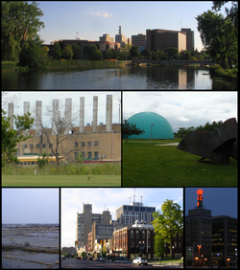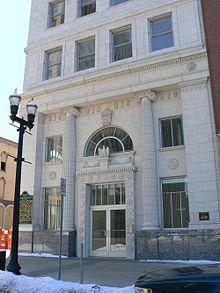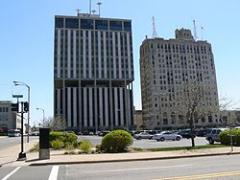Flint, Michigan, Hgh State Clinic, Hgh Injections, Hrt Doctors
Flint, Michigan Blood Testing Facilities
 Represents a LabCorp blood testing facility
Represents a LabCorp blood testing facility Represents a Quest Diagnostics blood testing facility
Represents a Quest Diagnostics blood testing facility

Nearby Labcorp Blood Testing facilities:
- Labcorp Center Distance: 35 m, 2191 S Blvd, Auburn Hills, Oakland County, MI, 48326
- Labcorp Center Distance: 39 m, 28595 Orchard Lake Rd Ste 103, Farmington Hills, Oakland County, MI, 48334
- Labcorp Center Distance: 40 m, 1701 South Boulevard E Ste 107, Rochester Hills, Oakland County, MI, 48307
- Labcorp Center Distance: 44 m, 20276 Middlebelt Ste 7, Livonia, Wayne County, MI, 48152
- Labcorp Center Distance: 53 m, 5250 Auto Club Dr Ste 310A, Dearborn, Wayne County, MI, 48126
- Labcorp Center Distance: 95 m, 1155 E Paris Se Suite 200, Grand Rapids, Kent County, MI, 49546
- Labcorp Center Distance: 97 m, 1565 S Byrne Rd Ste 105, Toledo, Lucas County, OH, 43614
Nearby Quest Blood Testing facilities:
- Quest Center Distance: 2 m, G1071 N Ballenger Hwy, Flint, Genesee County, MI, 48504-4453
- Quest Center Distance: 4 m, 1397 S Linden Rd, Flint, Genesee County, MI, 48532-4194
- Quest Center Distance: 5 m, 6011 Porter Rd, Grand Blanc, Genesee County, MI, 48439-8538
- Quest Center Distance: 6 m, 11515 N Saginaw St, Mount Morris, Genesee County, MI, 48458-2049
- Quest Center Distance: 8 m, 1097 S State Rd, Davison, Genesee County, MI, 48423-1904
- Quest Center Distance: 15 m, 425 N Fenway Dr, Fenton, Genesee County, MI, 48430-3810
- Quest Center Distance: 18 m, 944 Baldwin Rd, Lapeer, Lapeer County, MI, 48446-3089
- Quest Center Distance: 24 m, 5825 Ortonville Rd, Clarkston, Oakland County, MI, 48346-2983
- Quest Center Distance: 25 m, 6185 Dixie Hwy, Bridgeport, Saginaw County, MI, 48722-9618
- Quest Center Distance: 28 m, 6620 Highland Rd, Waterford, Oakland County, MI, 48327-1682
- Quest Center Distance: 33 m, 2062 N Center Rd, Saginaw, Saginaw County, MI, 48603-3716
- Quest Center Distance: 34 m, 4705 Towne Centre Rd, Saginaw, Saginaw County, MI, 48604-2818
- Quest Center Distance: 35 m, 43494 Woodward Ave, Bloomfield Hills, Oakland County, MI, 48302-5052
- Quest Center Distance: 38 m, 135 Barclay Cir, Rochester Hills, Oakland County, MI, 48307-4599
- Quest Center Distance: 39 m, 40015 Grand River Rd, Novi, Oakland County, MI, 48375-2911
- Quest Center Distance: 40 m, 511 Pierce St, Birmingham, Oakland County, MI, 48009-1790
- Quest Center Distance: 41 m, 200 S Wenona St, Bay City, Bay County, MI, 48706-8820
- Quest Center Distance: 42 m, 38815 Dequindre Rd, Troy, Oakland County, MI, 48083-5769
- Quest Center Distance: 43 m, 555 W 14 Mile Rd, Clawson, Oakland County, MI, 48017-3100
- Quest Center Distance: 45 m, 42500 Hayes Rd, Clinton Township, Macomb County, MI, 48038-6768
- Quest Center Distance: 47 m, 11583 Farmington Rd, Livonia, Wayne County, MI, 48150-5729
- Quest Center Distance: 49 m, 2050 N Haggerty Rd, Canton, Wayne County, MI, 48187-3796
- Quest Center Distance: 51 m, 555 W Wackerly St, Midland, Midland County, MI, 48640-4713
- Quest Center Distance: 53 m, 25070 Michigan Ave, Dearborn, Wayne County, MI, 48124-1740
- Quest Center Distance: 64 m, 14720 King Rd, Riverview, Wayne County, MI, 48193-7973
- Quest Center Distance: 65 m, 300 W Washington Ave, Jackson, Jackson County, MI, 49201-2180
- Quest Center Distance: 67 m, 520 N. Mission, Mt. Pleasant, Isabella County, MI, 48858-5003
- Quest Center Distance: 76 m, 1046 N Monroe St, Monroe, Monroe County, MI, 48162-2936
- Quest Center Distance: 91 m, 3950 Sunforest Ct, Toledo, Lucas County, OH, 43623-4485
- Quest Center Distance: 96 m, 1971 E Beltline Ave Ne, Grand Rapids, Kent County, MI, 49525-7061
- Quest Center Distance: 99 m, 515 Michigan St Ne, Grand Rapids, Kent County, MI, 49503-5721
Michigan Hormone Replacement Therapy Services
Are you interested in Hormone Restoration but don't know where to turn? The Conscious Evolution Institute is a fully licensed and insured medical clinic that specializes in the most effective Hormone Replacement Products available on the market today. Our staff of trained health and wellness clinicians and Anti-Aging Doctors can help you uncover any underlying Hormone Imbalances which may be hindering your overall well-being.
By just filling out the form on our website, or giving our clinic a call, we can arrange for you to meet with our vast and experienced network of affiliate medical physicians that can provide the physical and take the blood sample necessary to provide all of the data for our professionals to make an informed diagnosis. If you qualify for therapy, we can have Quality HRT Treatments shipped directly to your door.
Michigan HGH Replacement Services
Human Growth Hormone is one of the most important hormones when it comes to optimal health. HGH is the primary hormone responsible for cellular metabolism, and it plays a role in the peak function of systems all throughout the body. It helps build muscle mass, burn fat, and it helps sustain various systems, including the immune system and the cardiovascular system. Age-Related HGH Deficiency robs the body of this vital hormone, causing the body to slow down, which encourages premature aging and disrupts the healthy function of the body.
Human Growth Hormone Injection Therapy and Sermorelin Injection Therapy are both valid and effective options when it comes to the war against HGH Deficiency. Sermorelin restores hormone balance by optimizing the brain's own production of Growth Hormone, while HGH Therapy directly substitutes for the body's flagging ability to produce its own supply.
Michigan Low-T Treatments
Our clinic also provides treatment for Age-Related Testosterone Deficiency, also known as Andropause. As men grow older, their bodies start to produce smaller and smaller concentrations of Testosterone. There are a number of variables which can speed up the rate of Testosterone Decline, including poor sleeping habits, obesity, and stress. Testosterone Levels start to drop in the late twenties and early thirties, and continue to decline for the rest of your life.
Low-T is a clinical medical condition that occurs once Testosterone Deficiency starts to have a negative impact on your life. The most noticeable symptoms are sexual dysfunction and lack of sex drive, but other symptoms include hypertension, glucose intolerance, hardening of the arteries, anxiety, and trouble sleeping. Testosterone Deficiency is most effectively treated with Testosterone Hormone Replacement Therapy, which is available in many forms, including Testosterone Injections, Gels, Creams, and Dermal Implants.
Michigan HCG Weight Loss Therapy
HCG stands for Human Chorionic Gonadotropin. You may not have ever heard of this hormone, but it is a highly effective weight loss treatment that has helped tens of thousands of men and women across the country diet successfully for the first time in their lives.
For men and women that simply have not found a diet that works for them, HCG Therapy makes dieting easier than ever. HCG has the unique ability to inhibit cravings and soften the impact of hunger. It also encourages the increased metabolism of bodyfat, which sustains energy even when on a low-calorie diet, and wards off fatigue.
If you think you may be a candidate for Weight Loss with HCG, we can help you get treatment!
Major Cities in Michigan
Detroit
Detroit, Michigan is the largest city in the state of Michigan, as well as the largest metropolitan area by far. Detroit is home to a number of professional sports teams, including the NHL Detroit Redwings, the NBA Detroit Pistons, the NFL Detroit Lions, and the MLB Detroit Tigers.
Detroit has faced a significant economic decline over the past forty years, but is slowly recovering, and the suburban communities outside of Detroit, including Auburn Hills, Grosse Point, and Bloomfield Hills remain strong. Museums in Detroit include the Detroit Science Center, the Detroit Historical Museum, and the Detroit Institute of Arts.
Grand Rapids
Grand Rapids is located in the southwestern region of Michigan, and is the second largest city in the state. Grand Rapids also goes by the nickname, the River City, because of its location on the Grand River. Among the largest employers in Grand Rapids are Meijer, Axios Incorporated, and Spectrum Health.
A number of companies are also based in Grand Rapids, including Spartan Stores, Bissell, and Alticor/Amway. The city is widely recognized for its strong economy, and is frequently listed among the best mid-sized cities to live, work, and invest.
Warren
Warren is the most populous suburb of Detroit, and is the third biggest city in the state of Michigan. Historically, Warren was known as Beebe's Corner, and officially became the city of Warren in 1957.
Warren has a strong economy, based largely around its military and automotive presence. Among the companies that are located in Warren are the GM Cadillac Motor Car Division, Tank Automotive Research, and the GM Technical Center. Warren is also the home of Big Boy restaurants.
Sterling Heights
Sterling Heights is another suburb of Detroit, and is located immediately north of Warren, Michigan. Sterling Heights is the fourth biggest city in Michigan. The area began as an agricultural community, selling crops such as rhubarb to the citizens of Detroit, but beginning in the late fifties and early sixties, it quickly became a large suburban community. Sterling Heights is considered one of the safest mid-sized cities in the country.
Lansing
Lansing is located in central Michigan, and is the capital of the state. Michigan State is located in East Lansing, Michigan. Lansing is unique among United States capitals, because it is the only capital which is not considered the county seat (which is Mason, Michigan).
The largest public employers in the area are Michigan State University and the state itself. The largest private employers are General Motors and Sparrow Health System. Lansing has a number of interesting cultural landmarks, including the Lansing Symphony Orchestra, the Riverwalk Theater, and the Impression 5 Science Center.
All About Flint, Michigan Geographic Area


Flint is a city in the U.S. state of Michigan, located along the Flint River, 66 miles (106 km) northwest of Detroit. According to the 2010 census, Flint has a population of 102,434, making it the seventh largest city in Michigan.
Flint is the county seat of Genesee County in the Flint/Tri-Cities region of Michigan. Genesee County largely comprises the entirety of Flint's metropolitan area, the fourth largest metropolitan area in Michigan with a population of 425,790 in 2010.
Flint is best known as the birthplace of General Motors (GM), and also the Flint Sit-Down Strike of 1936 ae37 that played a vital role in the formation of the United Auto Workers. Flint is also home to the headquarters of Citizens Republic Bancorp. Bishop International Airport is also considered to be part of the city, even though it is surrounded by Flint Township and Mundy Township.
The Saginaw Valley, particularly the vicinity of Flint, is considered by some to be the oldest continually inhabited area of Michigan. Regardless of the validity of this claim, the region was home to several Ojibwa tribes at the start of the 19th century, with a particularly significant community established near present-day Montrose. The Flint River had several convenient fords which became points of contention among rival tribes, as attested by the presence of arrowheads and burial mounds near Flushing.
In 1819, Jacob Smith, a fur trader on cordial terms with both the local Ojibwas and the territorial government founded a trading post in Flint itself. On several occasions, Smith negotiated land exchanges with the Ojibwas on behalf of the U.S. government, and he was highly regarded on both sides. Smith apportioned many of his holdings to his children. As the ideal stopover on the overland route between Detroit and Saginaw, Flint grew into a small but prosperous village, and incorporated in 1855. The 1860 U.S. census indicated that Genesee County had a population of 22,498 of Michigan's 750,000.
In the latter half of the 19th century, Flint became a center of the Michigan lumber industry. Revenue from lumber funded the establishment of a local carriage-making industry. As horse-drawn carriages gave way to the automobiles, Flint then naturally grew into a major player in the nascent auto industry. Buick Motor Company, after a rudimentary start in Detroit, soon moved to Flint. AC Spark Plug (now part of Delphi) originated in Flint. These were followed by several now-defunct automobile marques such as the Dort, Little, Flint, and Mason brands. And Chevrolet's first (and for many years, main) manufacturing facility was also in Flint, although the Chevrolet headquarters were in Detroit. For a brief period, all Chevrolets and Buicks were built in Flint.
In 1904, local entrepreneur William C. Durant was brought in to manage Buick, which became the largest manufacturer of automobiles by 1908. In 1908, Durant founded General Motors, filing incorporation papers in New Jersey, with headquarters in Flint. GM moved its headquarters to Detroit in the mid 1920s. Durant lost control of GM twice during his lifetime. On the first occasion, he befriended Louis Chevrolet and founded Chevrolet, which was a runaway success. He used the capital from this success to buy back share control. He later lost decisive control again, permanently. Durant experienced financial ruin in the stock market crash of 1929 and subsequently ran a bowling alley in Flint until the time of his death in 1947.
For the last century, Flint's history has been dominated by both the auto industry and car culture. During the Sit-Down Strike of 1936 ae1937, the fledgling United Automobile Workers triumphed over General Motors, inaugurating the era of labor unions. The successful mediation of the strike by Governor Frank Murphy, culminating in a one page agreement recognizing the Union, began an era of successful organizing by the UAW. The city was a major contributor of tanks and other war machines during World War II due to its extensive manufacturing facilities. For decades, Flint remained politically significant as a major population center as well as for its importance to the automotive industry.
A freighter named after the city, the SS City of Flint was the first US ship to be captured during the Second World War in October, 1939. The vessel was later sunk in 1943.
The eighth deadliest tornado on record in the United States struck Beecher, just north of Flint, on June 8, 1953, killing 115 people, injuring 844. Known as the "Beecher Tornado", after the North Side community which the tornado devastated. On the next day the same weather system spawned the worst tornado in New England in Worcester, Massachusetts, killing another 94 people.
The city's population peaked in 1960 at almost 200,000, at which time it was the second largest city in the state. The decades of the 1950s and 1960s are seen as the height of Flint's prosperity and influence. They culminated with the establishment of many local institutions, most notably including the Flint Cultural Center. This landmark remains one of the city's chief commercial and artistic draws to this day.
Starting in the late 1960s through the end of the 20th century, Flint suffered from disinvestment, deindustrialization, depopulation and urban decay, as well as high rates of crime, unemployment and poverty. Initially, this took the form of "white flight" that afflicted many urban industrialized American towns and cities. Given Flint's role in the automotive industry, this decline was exacerbated by the 1973 oil crisis and subsequent collapse of the U.S. auto industry.
In the 1980s, the rate of deindustrialization accelerated again with local GM employment falling from a 1978 high of 80,000 to under 8,000 by 2010. Only 10% of the manufacturing work force from its height remains in Flint. Many factors have been blamed, including outsourcing, exporting jobs abroad, moving jobs to non-union facilities, unionization, exorbitant overhead, globalization, and more recently, a dramatic decline in General Motors sales. Locally, these rationales are often strictly applied along lines of political orientation, and labor remains a divisive and polarizing issue.
This decline was highlighted in the film Roger & Me by Michael Moore (the title refers to Roger B. Smith, the CEO of General Motors during the 1980s). Also highlighted in Moore's documentary was the failure of city officials to reverse the trends with entertainment options (e.g. AutoWorld) during the 1980s. Moore, a native of Davison (a Flint suburb), revisited Flint in his later movies, including Bowling for Columbine and Fahrenheit 9/11.

The first decade of the 21st century opened on the final stages of large-scale General Motors deindustrialization. By 2002, Flint had accrued $30 million in debt.
On March 5, 2002, the city's voters recalled mayor Woodrow Stanley. A few months later, on May 8, the State of Michigan appointed an emergency financial manager, Ed Kurtz. The emergency financial manager displaced the temporary mayor, Darnell Earley in the city administrator position. The City Council fought the takeover in court.
In August, city voters elected former Mayor James Rutherford to finish the remainder of Stanley's term of office. On September 24, Kurtz commissioned a salary and wage study for top city officials from an outside accounting and consulting firm. The financial manager then installed a new code enforcement program for annual rental inspections and emergency demolitions. On October 8, Kurtz ordered cuts in pay for the mayor (from $107,000 to $24,000) and the City Council members (from $23,000 to $18,000). He also eliminated insurance benefits for most officials. After spending $245,000 fighting the takeover, the City Council ended the lawsuits on October 14. Immediately thereafter on October 16, a new interim financial plan was put in place by the manager. This plan initiated controls on hiring, overnight travel and spending by city employees. On November 12, Kurtz directed the city's retirement board to stop unusual pension benefits, which had decreased some retiree pensions by 3.5%. Kurtz sought the return of overpayments to the pension fund. However, in December, the state attorney general stated that Emergency Financial Managers do not have authority over the retirement system. With contract talks stalled, Kurtz stated that there either need to be cuts or layoffs to union employees. That same month, the city's recreation centers were temporarily closed.
Emergency measures continued in 2003. In May, Kurtz increased water and sewer bills by 11% and shut down operations of the ombudsman's office. In September 2003, a 4% pay cut was agreed to by the city's largest union. In October, Kurtz moved in favor of infrastructure improvements, authorizing $1 million in sewer and road projects. Don Willamson was elected a full-term mayor and sworn in on November 10. In December, city audits reported nearly $14 million in reductions in the city deficit. For the 2003 ae2004 budget year, estimates decreased that amount to $6 million to $8 million.
With pressure from Kurtz for large layoffs and replacement of the board on February 17, 2004, the City Retirement Board agreed to four proposals reducing the amount of the city's contribution into the system. On March 24, Kurtz indicated that he would raise the City Council's and the Mayor's pay and in May, Kurtz laid off 10 workers as part of 35 job cuts for the 2004 ae05 budget. In June 2004, Kurtz reported that the financial emergency was over. Of the nearly 80,000 people that worked for General Motors in Flint during its peak years in the late 1970s, only about 8,000 were left after the most recent 2006 buyouts.

In the last decade, local efforts to counter deindustrialization have centered around diversifying the economy, either by attracting small parts manufacturers with vacant industrial space and tax incentives, or steering the city toward a more commercially driven economy.
Industrially, the vacated Buick City site is currently the United States' largest brownfield. Its accessibility to the Flint River and major rail networks have made it potentially attractive to shipping interests. A local shipping company has considered turning Buick City into a large shipping center. This center could provide 600 jobs and spur many small businesses. In a recent new GM-UAW deal, an agreement was reached to build a new engine plant on a portion of the Buick City site. This plant is expected to provide 800 new jobs.
Commercially, local organizations have attempted to pool their resources in the central business district and to expand and bolster higher education at four local institutions. Examples of their efforts include the following:
Similar to a plan in Detroit, Flint is in the process of tearing down thousands of abandoned homes in order to curb crime and reduce city services to a level where the population can sustain it. As of June 2009, approximately 1100 homes have been demolished in Flint, with one official estimating another 3000 more will have to be torn down.
The Flint City Council on April 26, 2010 voted to join the new Karegnondi Water Authority.
On September 30, 2011, Michigan Governor Rick Snyder appointed an eight-member review team to review Flint's financial state with a request to report back in 30 days (half the legal time for a review). On November 8, 2011, Mayor Dayne Walling defeated challenger Darryl Buchanan 8,819 votes (56%) to 6,868 votes (44%). That same day, the Michigan State review panel declared the City of Flint to be in the state of a "local government financial emergency" recommending the state again appoint an Emergency Manager. Governor Snyder appointed Michael Brown as the city's Emergency Financial Manager on November 29, effective December 1. On December 2, Brown dismissed a number of top administrators including City Administrator Gregory Eason, Human Resources Director Donna Poplar, Citizen Services Director Rhoda Woods, Green City Coordinator Steve Montle and independent officials including Ombudswoman Brenda Purifoy and Flint Civil Service Commission Director Ed Parker. Brown also removed pay and benefits from Flint's elected officials.
On March 20, 2012, days after a lawsuit was filed by labor union AFSCME, and a restraining order was issued against Brown, his appointment was found to be in violation of the Michigan Open Meetings Act, and Mayor Walling and the City Council was reappointed. The state immediately filed an emergency appeal, claiming the financial emergency still exists. On March 26, the appeal was granted, putting Brown back in power. The city can appeal 21 days after that date. Brown unveiled his fiscal year 2013 budget on April 23, 2012. It includes cuts in nearly every department including police and fire, as well as higher taxes.

Flint lies in the Flint/Tri-Cities region of Michigan. Flint and Genesee County can be categorized as a subregion of Flint/Tri-Cities.
According to the United States Census Bureau, the city has a total area of 34.1 square miles (88 km2), of which, 33.6 square miles (87 km2) of it is land and 0.4 square miles (1.0 km2) of it (1.26%) is water. Flint lies just to the northeast of the Flint hills. The terrain is low and rolling along the south and east sides, and flatter to the northwest.
Flint has several neighborhoods grouped around the center of the city on the four cardinal "sides". The downtown business district is centered on Saginaw Street south of the Flint River. Just west, on opposite sides of the river, are Carriage Town (north) and the Grand Traverse Street District (south). Both neighborhoods boast strong neighborhood associations. The University Avenue corridor of Carriage Town is home to the largest concentration of "Greek" housing in the area, with fraternity houses from both Kettering University, and the University of Michigan Flint.
Chapter houses include Sigma Alpha Epsilon, Delta Chi, Theta Chi, Lambda Chi Alpha, Theta Xi, Alpha Phi Alpha, and Delta Tau Delta Fraternities. These neighborhoods were the center of manufacturing for and profits from the nation's carriage industry until the 1920s, and to this day are the site of many well-preserved Victorian homes and the setting of Atwood Stadium. Just north of downtown is River Village, a successful example of mixed-income public housing. To the east of I-475 is Central Park, a small neighborhood defined by culs-de-sac.

The North Side and 5th Ward are predominantly African American, with such historic districts as Buick City and Civic Park on the north, and Sugar Hill, Floral Park, and Kent and Elm Parks on the south. Many of these neighborhoods were the original centers of early Michigan blues. The South Side in particular was also a center for multi-racial migration from Missouri, Kentucky, Tennessee, and the Deep South since World War II. These neighborhoods are most often lower income, but have maintained some level of economic stratification. The East Side is the site of the Applewood Mott Estate, and Mott Community College, the Cultural Center, and East Village, one of Flint's more prosperous areas.
Just north is Eastside Proper, also known as the "State Streets", a low-income rental area that has rapidly diversified and is the center of Flint's Hispanic community. The Eastside has had trouble with prostitution, particularly in areas centered on Belle Ave, New York Ave, and Jane Avenue situated between Dort Hwy and Lewis St. The West Side includes the main site of the 1937 sitdown strike, the Mott Park neighborhood, Kettering University, and the historic Woodcroft Estates, owned in the past by legendary automotive executives and current home to prominent and historic Flint families such as the Motts, the Manleys, and the Smiths.
Facilities associated with General Motors in the past and present are scattered throughout the city, including GM Truck and Bus, Flint Metal Center and Powertrain South (clustered together on the city's southwestern corner); Powertrain North, Flint Tool and Die and Delphi East. The largest plant, Buick City and adjacent facilities, have been demolished.

Half of Flint's fourteen tallest buildings were built during the 1920s. The city's tallest building, the 19-story Genesee Towers, was completed in 1968. The building has become unused in recent years and has fallen into severe disrepair; a cautionary sign warning of falling debris was put on the sidewalk in front of it. City officials have considered having the building demolished.
Flint lies within the humid continental climate zone (Koppen Dfb), with four distinct seasons. Summer is very warm and humid, with a July daily mean temperature of 70.6 °F (21.4 °C), and highs reaching 90 °F (32 °C) on about 7 days per year. Though days of 100 °F (38 °C) are rare, the record high is 108 °F (42 °C), set in July 1936. Winters are cold and snowy, with a January average of 21.3 °F ( na5.9 °C) and lows falling to 0 °F ( na18 °C) or below on 10 to 11 nights a season.
The lowest temperature on record is at most na25 °F ( na32 °C), set in January 1976. Though snow averages 48 inches (122 cm) per season, snow cover is not necessarily reliable and may disappear for short periods of time. Precipitation is greatest toward the end of summer.
As of the 2000 census, there were 124,943 people, 48,744 households, and 30,270 families residing in the city. The population density was 3,714.9 per square mile (1,434.5/km ²). There were 55,464 housing units at an average density of 1,649.1 per square mile (636.8/km ²). The racial makeup of the city was 53.27% Black or African American, 41.39% White, 0.64% Native American, 0.44% Asian, 0.02% Pacific Islander, 1.11% from other races, and 3.14% from two or more races. 2.99% of the population were Hispanic or Latino of any race. 7.2% were of German and 5.6% American ancestry according to the 2000 census. 96.0% spoke English and 2.5% Spanish as their first language.
As of the 2010 census, there were 102,434 people residing in the city. The racial makeup of the city residents was 56.6% black or African American; 37.4% White; 0.5% Asian; and 3.9% from two or more races. A total of 3.9% of the population were Hispanic or Latino of any race. Non-Hispanic Whites were 35.7% of the population in 2010, compared to 70.1% in 1970.
There were 48,744 households out of which 33.5% had children under the age of 18 living with them, 29.0% were married couples living together, 27.5% had a female householder with no husband present, and 37.9% were non-families. 31.9% of all households were made up of individuals and 9.9% had someone living alone who was 65 years of age or older. The average household size was 2.51 and the average family size was 3.16.
In the city the age distribution of the population shows 30.6% under the age of 18, 10.3% from 18 to 24, 29.4% from 25 to 44, 19.2% from 45 to 64, and 10.5% who were 65 years of age or older. The median age was 31 years. For every 100 females there were 88.6 males. For every 100 females age 18 and over, there were 83.1 males.
The median income for a household in the city was $28,015, and the median income for a family was $31,424. Males had a median income of $34,009 versus $24,237 for females. The per capita income for the city was $15,733. About 22.9% of families and 26.4% of the population were below the poverty line, including 37.4% of those under age 18 and 13.4% of those age 65 or over.
Flint City Derby Girls
Women's Flat Track Roller Derby WFTDA Apprentice Team Perani Arena and Events Center
The Flint City Derby Girls is a non profit League of Women skaters. FCDG is currently a WFTDA Apprentice League, with expectations of becoming a full member in 2012. Roller Derby is easily the fastest growing sport in America if not the world. FCDG played to over 3,600 fans in 2011, in 2012 they move to Perani Arena, with hopes to sell out each of their 6 home bouts. FCDG has two teams. The FCDG A Team and the Grand Funk Hellcats. The first Home Bout is March 24, 2012 at Perani (A Team vs. Lansing Mitten Mavens and Hellcats vs. Eastside Derby Girls).
The Michigan Warriors are a tier-A junior hockey team in the North American Hockey League. They are in their second season, and play their home games at Perani Arena, which has a seating capacity of 4,021, and 4,421 with standing room. In their inaugural season, they were defeated in the championship game.
There is semi-pro football at Atwood Stadium with the Flint Fury. Atwood is an 11,000+ seat stadium in downtown Flint which has hosted many events, including baseball. When artificial turf was installed, it was no longer able to host baseball games. The Flint Fury have been in action since 2003, and are currently a part of the Great Lakes Football League. The team was founded by two of its players; Charles Lawler and Prince Goodson, who both played for the defunct Flint Falcons semi-pro team. The team is now solely owned by Lawler.
Although they no longer play their games in Flint, the Rampage semi-pro football team keeps Flint in their name, despite the fact that their new home field is located in Fenton, Michigan. They currently play in the Great Lakes Football League.
The Flint Fire ABA basketball team was proposed for 2011 ae12, but never materialized.
Flint is twinned with Hamilton, Ontario, and its amateur athletes compete in the Canusa Games, held alternatively there and here since 1957.
Although Flint does not have its own NBA team, it does boast that many of its local players have gone to the NBA or on to play Division 1 or European professional basketball. Glen Rice and Eddie Robinson both hail from Flint, as do Morris Peterson, Mateen Cleaves, Charlie Bell, and Antonio Smith (four of the five starters from Michigan State University's "Flintstones" 2000 National Championship team).
A local teacher, turned independent film maker, Marcus Davenport chronicles Flint's unique ties to Basketball and the basketball culture in Flint Star: The Motion Picture, a documentary film Will Ferrell's 2008 movie Semi-Pro is based on the fictional basketball team the Flint Tropics.
The 2009 Heisman Trophy winner Mark Ingram is from Flint. He beat out Stanford Running Back, Toby Gerhart and Texas Quarterback, Colt McCoy. He won with 1304 total votes. Mark Ingram attends the University of Alabama and is their first Heisman winner. He was a member of the National Champion 2009 Alabama Crimson Tide football team.
2011 Conn Smythe winner and Stanley Cup champion Tim Thomas was born in Flint. In the 2010 ae11 National Hockey League season, Thomas boasted a .938 save percentage, setting a new NHL record among goaltenders.
The city has operated under at least four charters (1855, 1888, 1929, 1974). The City is currently run under an Emergency Manager as the State of Michigan has declared a state of local government financial emergency. The Emergency manager supplants the City Council and Mayor. The 1974 Charter is the City's current charter that gives the city a Strong Mayor form of government. Its also instituted the appointed independent office of Ombudsman, while the city clerk is solely appointed by the City Council. The City Council is composed of members elected from the city's nine wards.
Residents are served by the Flint Police Department, the Flint Fire Department, and several private ambulance companies. Flint has its own 9-1-1 call center, located in the basement of fire department headquarters, which operates independently of Genesee County's call center in Flint Township. The Public Safety Director is Alvern Lock. On April 20, 2012, Barnett Jones was named the Public Safety Administrator. Lock will remain the Public Safety Director. Brown revealed his Public Safety Plan on May 4, 2012. It includes increased partnerships with Michigan State Police, reopening the City Lockup, upgrading technology, a possible closure of the city's 9-1-1 center and consolidation with the countywide 9-1-1 center, and a new violent crime task force in partnership with the Genesee County Sheriff's Department.
During the 1980s and 1990s, Flint gained a reputation as a city with a high crime rate. According to FBI statistics, Flint's violent crime rate has been in the top five among U.S. cities with a population of at least 50,000 people for the years 2007, 2008, 2009, and 2010. In 2007 the FBI ranked Flint as the second most violent city in the U.S, while in both 2008 and 2009 Flint had the fifth highest violent crime rate. FBI data shows in 2009 Flint had 2,244 violent crimes, including 36 homicides, 91 rapes and 1,527 felonious assaults. While homicides and assaults increased in 2009, rapes and robberies decreased, contributing to an overall 3 percent drop in crime. "It's been a very difficult year," Walling said on December 16, hours after the city's 64th homicide. In dealing with the city's multimillion-dollar deficit, Walling laid off 66 police officers in 2010, including the 20 layoffs that took effect December 17, 2010.
"Families of Murder Children Support Group" Robert Johnson noted the growing numbers of unsolved Homicides in the City of Flint: 2008 32 homicides, 19 convictions; 2009 36 homicides and 12 unsolved; and 2010 to date 64 homicides with 33 unsolved. As a result of the record number of homicides in 2010, a research report was published by the Center for Homicide Research describing the problem and proposing public policy changes. The Layoff numbers, according to Keith Spears (Police officers Union President) "In February '09 Walling laid off 46. December 17, 2010 Mayor Walling laid off another 20. In 2008 we had 208 patrol officers (this is not counting Sergeants, Lieutenants, Captains, and the Chief). As of December 17, 2010, we had 67 patrol officers left. In 2008 Williamson laid off 48 officers. There have been a total of 114 lay offs since 2008, but we have lost a total of 141 positions. That's because they did not replace some positions after officers retired" "We aore trying to take care of it as much as we can."
According to a study of FBI crime statistics by CQ Press, in 2010, Flint was named the "fourth most dangerous city in the United States." In December 2011, Flint rose to the number 1 spot on the list.
According to a 2011 national poll by 24/7 Wall St. Flint was named the most dangerous city in the U.S. in 2011.
On September 28, 2011 it was announced the Flint Police Department has been awarded $1,225,638 from the Department of Justice's Community Oriented Policing Services (COPS) program to re-hire 6 laid off patrol officers. The officers are scheduled to be on the job starting in October 2011.
On December 19, 2011, it was reported that Flint's violent crime rate for the first half of 2011 was ranked No. 2 by the FBI, with St. Louis, Missouri taking the No. 1 spot. The report stated crime in every category, except motor vehicle thefts, was down as compared to the same period in 2010.
On April 27, 2012, in a report by Forbes Magazine, Flint was rated No. 6 on a list of "America's most violent cities for women".
On June 12, 2012, Flint took the #1 spot of the FBI's 2011 List of Most Violent Cities With Populations of over 100,000 people. The report stated Flint had 2,237 violent crimes (murders, rapes, robberies, and aggravated assaults) in 2011. It also stated Flint had increases in non-violent crimes (burglaries, larcenies, auto thefts, arson fires, and other property crimes). The next day, 24/7 Wall Street claimed Flint also made the #1 spot on a similar list, and stated in 2011 Flint had twice as many violent crimes (2,392) as those on their list of the "10 safest cities in America" combined (which in total was 1,246). Additionally, Flint had the most arson fires (287) in 2011 per capita per the FBI.
In response, Governor Snyder again visited Flint on June 18, and announced he will send more state troopers to Flint, and give state money to Flint to run the city lockup. Additionally, on the same day, state representative Jim Ananich proposed the Michigan State Housing Development Authority give state money from the federal foreclosure benefit fund to the Flint Police Department to hire more officers. A month later on July 17, Ananich reiterated his push to secure those funds from the state, and also pointed out that scrap metal thefts are on the rise in the city, and proposed a portion of the $97 million fund be set aside to prevent them, which he claimed will also benefit the local economy by attracting new businesses to the city.
Most politicians are affiliated with the Democratic party despite the city's elections being nonpartisan. In 2006, Flint was the 10th most liberal city in the United States, according to a nationwide study by the non-partisan Bay Area Center for Voting Research which examined the voting patterns of 237 cities with a population over 100,000. Flint placed just after San Francisco (9) and before Seattle (16) and New York City (21).
Public K-12 education is provided under the umbrella of the Flint Community Schools. Students attend 25 elementary schools, a gender based 7 ae8 academy (Holmes), and three high schools (Flint Northern High School, Flint Northwestern High School, and Flint Southwestern Academy).
The state-run Michigan School for the Deaf is located in Flint.
The Catholic Central high school is Fr. Luke M. Powers Catholic High School which is part of the Roman Catholic Diocese of Lansing.
The Valley School is a small private K-12 school.
The county's only daily newspaper was the Flint Journal, which dates back to 1876. Effective June 2009 the paper ceased to be a daily publication, opting to publish on Thursdays, Fridays and Sundays. The move made Genesee County the largest county in the United States without a daily newspaper. The Flint Journal began publishing a Tuesday edition in March 2010. The East Village Magazine is a non-profit news magazine providing information about neighborhood issues since 1976. The monthly magazine centers on the East Village neighborhood, outside downtown Flint, but is distributed throughout the city. The Uncommon Sense was a recent publication featuring critical journalism, satirical cartoons, and articles on music and nightlife, but it ceased publishing in 2007. In January 2009, Broadside became the current independent newspaper, exclusively available in print. In early 2009 Flint Comix & Entertainment began circulating around college campuses, and local businesses. This monthly publication features local and nationally recognized comic artists, as well as editorials, and other news.
Two quarterly magazines have appeared in recent years: Innovative Health Magazine and Downtown Flint Revival Magazine. Debuting in 2008, Innovative Health highlights the medical advancements, health services and lifestyles happening in and around Genesee County, while Downtown Flint Revival reports on new developments, building renovations and the many businesses in the Downtown area.
University publications include University of Michigan aeFlint's student newspaper The Michigan Times, Kettering University's The Technician and the MCC Chronicle, formerly the MCC Post, which is a monthly magazine from Mott Community College.
WJRT-TV (ABC), formerly one of ten ABC owned-and-operated stations, is currently the only area station to operate from Flint. WSMH (Fox) and WCMZ-TV (PBS) are licensed to Flint, but their programming originates from outside of Flint proper, with WSMH originating from Flint suburb Mt. Morris Township and WCMZ rebroadcasting WCMU-TV of Mount Pleasant. WEYI (NBC), licensed to Saginaw, and WBSF (The CW), licensed to Bay City, has their studios in nearby Vienna Township, just north of Flint. Other stations outside the Flint area that serve the area include Saginaw-based WNEM-TV (CBS) (which has a news bureau in Downtown Flint), Delta College's WDCQ-TV (PBS), and WAQP (TCT).
The Flint radio market has a rich history. WAMM-AM 1420 (started in 1955, now gospel station WFLT) on the city's eastside was one of the first stations in the country to program to the black community and was also where legendary DJ Casey Kasem had his first radio job.
WTAC-AM 600 (now religious station WSNL) was a highly rated and influential Top 40 station in the 1960s and 1970s, showcasing Michigan artists and being the first in the U.S. to play acts like The Who and AC/DC. WTAC changed its format to country music in 1980 and then became a pioneering contemporary Christian music station a few years later; the calls are now on 89.7 FM, a member of the "Smile FM" network. WTRX-AM 1330 also played Top 40 music for a time in the 1960s and '70s.
The city's very first radio station, AM 910 WFDF, first went on the air in 1922. It has since relocated south into the Detroit market, changing its city of license to Farmington Hills and increasing its power to 50,000 watts.
In 1985, WWCK-FM 105.5 became the highest-rated rock station in America. The station (whose calls were derived from those of Windsor, Ontario's legendary CKLW) continued as a market leader after changing its format to CHR, which it has remained since, in 1989.
Today, the following stations serve Flint with an array of programming choices:
AM
FM
Townsquare Media's WCRZ is consistently the top-rated station in Flint and has been near the top of the ratings consistently since changing format from beautiful music WGMZ in 1984. Sister stations WRCL and WWBN also regularly chalk up top 10 ratings in Flint. Cumulus Media's top stations are WDZZ (usually the No. 2 rated station 12+ in Flint, second only to WCRZ) and WWCK. Cumulus also owns popular country station WFBE (which for many years was a classical-music public radio station owned by the Flint school system), as well as sports-talker WTRX and Saginaw/Bay City's WHNN (96.1 FM, Oldies) and WIOG (102.5 FM, Top 40), which both have good signals and significant listenership in Flint.
Radio stations from Detroit, Lansing, Lapeer and Saginaw may also be heard in the Flint area; Detroit's WJR (760 AM) is regularly rated among the top 10 stations in Flint and often higher-rated than any local Flint-based AM station.
The city of Flint is served by various bus lines. Amtrak provides intercity passenger rail service on the Blue Water line from Chicago to Port Huron at the border to Canada. For travel within and around the city, the Flint Mass Transportation Authority (MTA) provides local bus services. Greyhound Lines also runs inter-city bus services north to Bay City and south to Detroit. Indian Trails runs inter-city bus services west to Chicago.
Flint is served by Bishop International Airport.
Flint has four sister cities, as designated by Sister Cities International:
The following movies and TV shows have taken place or were filmed in Flint.
Word Count: 6434







